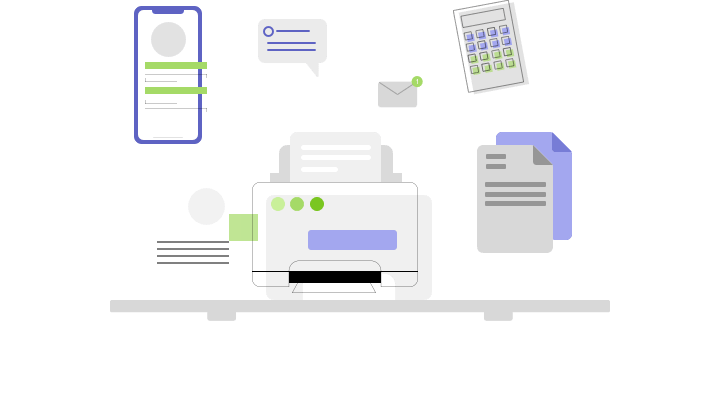
MACRS calculations tend to be a more complicated method for calculating depreciation and may benefit from the support of online bookkeeping a tax professional. If the depreciation deductions for your automobile are reduced under the passenger automobile limits, you will have unrecovered basis in your automobile at the end of the recovery period. If you continue to use the automobile for business, you can deduct that unrecovered basis after the recovery period ends. You can claim a depreciation deduction in each succeeding tax year until you recover your full basis in the car. The maximum amount you can deduct each year is determined by the date you placed the car in service and your business/investment-use percentage. The fraction’s numerator is the number of months (including parts of a month) the property is treated as in service during the tax year (applying the applicable convention).
📆 Date: Aug 2-3, 2025🕛 Time: 8:30-11:30 AM EST📍 Venue: OnlineInstructor: Dheeraj Vaidya, CFA, FRM
- If Maple buys cars at wholesale prices, leases them for a short time, and then sells them at retail prices or in sales in which a dealer’s profit is intended, the cars are treated as inventory and are not depreciable property.
- Depreciation on all assets is determined by using the straight-line-depreciation method.
- It also explains how you can elect to take a section 179 deduction, instead of depreciation deductions, for certain property and the additional rules for listed property.
- Property that is or has been subject to an allowance for depreciation or amortization.
- Business can use some discretion in applying the above methods or internal use, but the IRS specifies how they will calculate depreciation when filing tax returns.
Companies can choose from several methods to depreciate their assets. To demonstrate, we’ll use the example of a company purchasing a $50,000 computer server with an expected useful life of five years and a $5,000 salvage value. Depreciation is a standard accounting method that lets businesses divide the upfront cost of physical assets—from delivery trucks to data centers—across the number of years they expect to use them. Instead of recording an asset’s entire expense when it’s first bought, depreciation distributes the expense over multiple years. Depreciation quantifies the declining value of a business asset, based on its useful life, and balances out the revenue it’s helped to produce. Here are four common methods of calculating annual depreciation expenses, along with when it’s best to use them.
Depreciation in Real Estate
For passenger automobiles and other means of transportation, allocate the property’s use on the basis of mileage. It does not mean that you have to use the straight line method for other property in the same class as the item of listed property. If you are not entitled to claim these expenses as an above-the-line deduction, you may not claim a deduction for the expense on your 2024 return.
Units of Production Depreciation Method
According to the Internal Revenue Service (IRS), property is placed in service when it is in a state of readiness and availability for its assigned depreciating assets function. This means depreciation starts not when you order or pay for an asset, but when it is ready for its intended use. For example, let’s say the assessed real estate tax value for your property is $100,000. The assessed value of the house is $75,000, and the value of the land is $25,000.
Methods of Depreciation
If someone else uses your automobile, do not treat that use as business use unless one of the following conditions applies. You can revoke an election to use a GAA only in the following situations. However, these rules do not apply to any disposition described later under Terminating GAA Treatment. The following examples are provided to show you how to use the percentage tables. Basis adjustment due to recapture of clean-fuel vehicle deduction or credit. Your use of the mid-month convention is indicated by the “MM” already shown under column (e) in Part III of Form 4562.

If you work from home, you may also be able to claim depreciation on the part of your home that you use exclusively for business, such as a home office. If you have expensive assets, depreciation is a key accounting and tax calculation. The IRS publishes schedules giving the number of years over which different types of assets can be depreciated for tax purposes.

Land is not Catch Up Bookkeeping depreciable, so Nia includes only the cost of the house when figuring the basis for depreciation. You must generally use MACRS to depreciate real property that you acquired for personal use before 1987 and changed to business or income-producing use after 1986. You stop depreciating property when you have fully recovered your cost or other basis. You fully recover your basis when your section 179 deduction, allowed or allowable depreciation deductions, and salvage value, if applicable, equal the cost or investment in the property.
- Try FreshBooks free to streamline your depreciation calculations today.
- Properly distinguishing between inventory and depreciable assets ensures compliance with IRS regulations and accurate financial reporting.
- Businesses may decide to dispose of an asset if they sell it, in case of theft, or if the asset depreciates fully.
- You also generally continue to use the longer recovery period and less accelerated depreciation method of the acquired property.
- It also includes rules regarding how to figure an allowance, how to elect not to claim an allowance, and when you must recapture an allowance.
Units of production depreciation is a method that calculates the depreciation expense based on the number of units produced by the asset. This method is commonly used for assets that are used in production, such as machinery and equipment. Straight-line depreciation is the most common method used by businesses. It is a simple method that evenly distributes the cost of an asset over its useful life.
